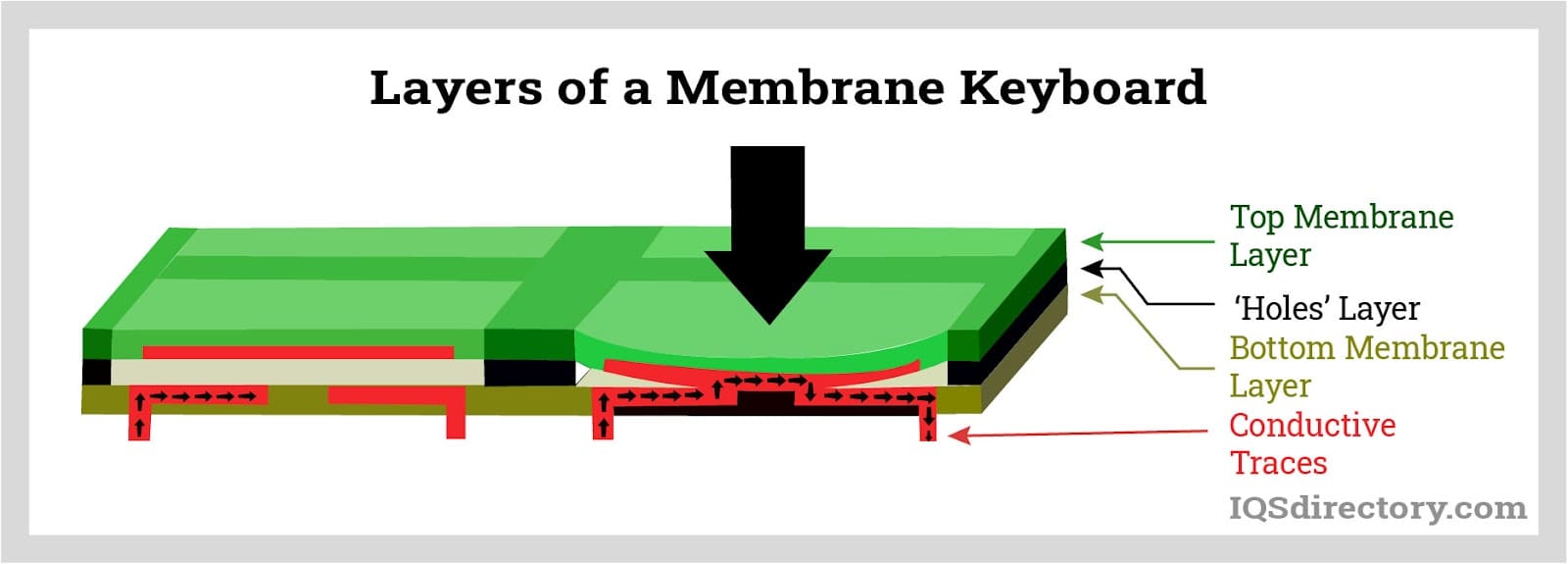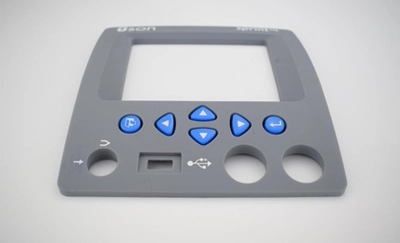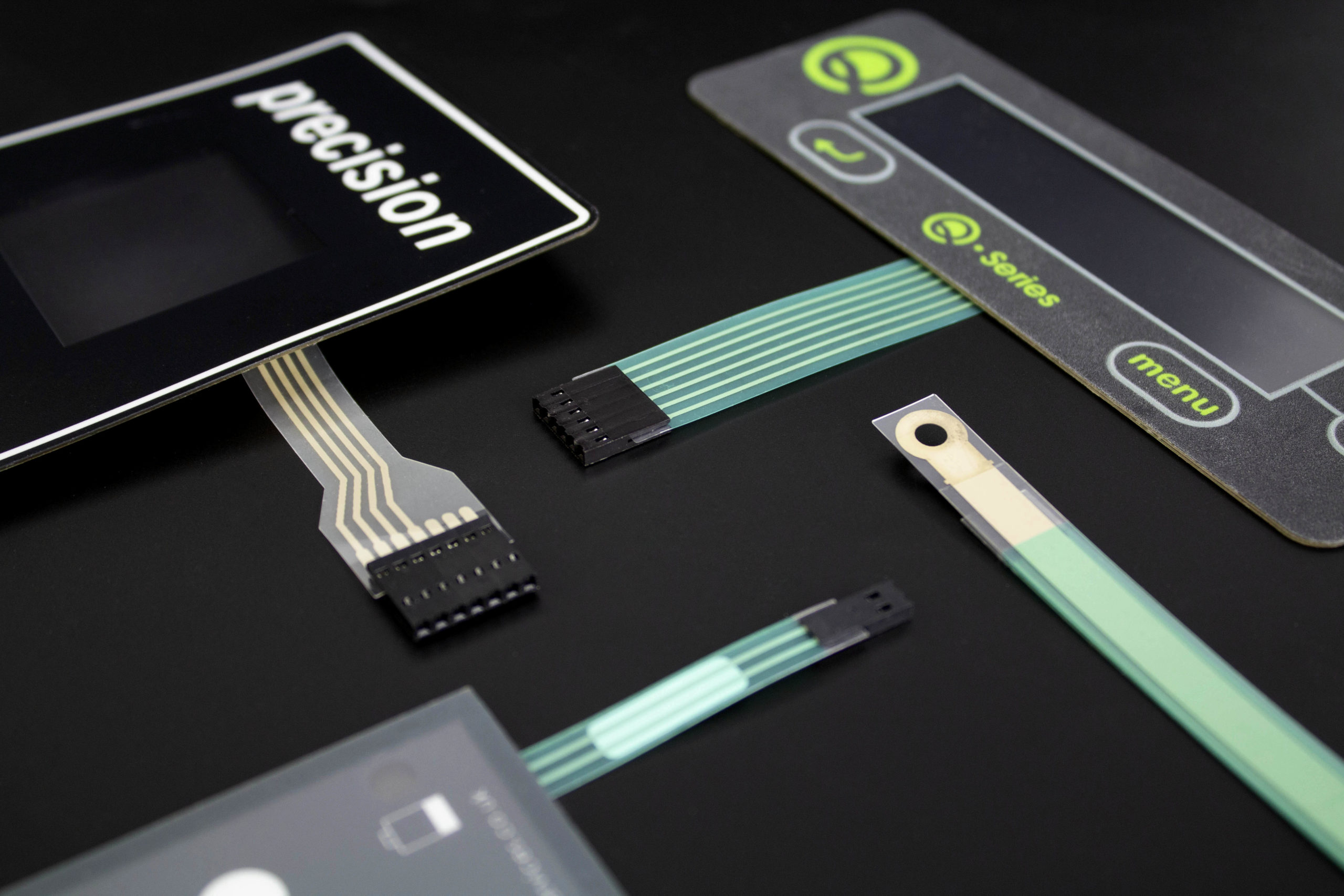The Manufacturing Refine Behind Membrane Layer Switch Over: What You Need to Know
The production process behind membrane layer changes combines cautious style, material choice, and quality assurance. It begins with recognizing the details of membrane button layout and advances through various phases, including material selections and printing strategies. Each phase plays a necessary duty in making certain performance and longevity. Nonetheless, the complexities of layer building and the strenuous testing criteria might expose insights that are not quickly obvious. What lies past these foundational aspects?
Comprehending Membrane Change Style
Although membrane layer buttons may show up simple at first look, their style includes elaborate considerations that ensure functionality and sturdiness. The design procedure starts with an extensive understanding of individual needs, including the interface's desired application and environmental factors. Functional designs is a crucial element, as the format should facilitate ease of usage while guaranteeing that tactile feedback meets individual expectations.Moreover, the layering of components, such as graphic overlays, glue layers, and conductive traces, must be exactly engineered. membrane switch. This split setup not only affects the button's responsiveness however additionally impacts its durability. Attention is provided to the sealing strategies utilized to secure against dampness and dirt, which can jeopardize performance. Additionally, layout considerations expand to appearances, where color design and aesthetic clarity improve user experience. Inevitably, the layout of membrane layer changes balances performance, user experience, and sturdiness, guaranteeing that they satisfy the demands of various applications successfully
Products Made Use Of in Membrane Switch Production
When selecting products for membrane switch production, it is vital to contemplate both performance and toughness. The key materials consist of polyester and polycarbonate films, which give adaptability and toughness. These films are commonly covered with sticky to ensure appropriate bonding to substrates. Conductive inks, usually made up of silver or carbon, are important for producing electric links within the switch, enabling for trustworthy operation.Additionally, a safety layer, such as a difficult layer, is regularly put on enhance scrape resistance and durability. The choice of backing product, such as acrylic or foam, can significantly impact the switch's tactile feeling and general individual experience. Furthermore, various environmental aspects, including temperature and moisture, should direct material choice to guarantee peak performance in certain applications. Ultimately, the right mix of products adds to the membrane layer button's capability and lifespan, making informed options crucial for manufacturers.
The Printing Process: Creating Graphics and Text
The printing process in membrane button production plays a substantial duty in creating premium graphics and message. Various graphic style methods are employed to assure visual allure and functionality, while cautious ink selection approaches are important for sturdiness and performance. Recognizing these components is fundamental for accomplishing finest lead to membrane layer button layout.
Graphic Layout Techniques
Graphic design strategies play a necessary function in the printing procedure of membrane layer switches, as they define how graphics and text will ultimately show up on the final product. Reliable graphic layout entails the calculated use layouts, shades, and font styles to enhance readability and aesthetic charm. Designers often make use of vector graphics for scalability, guaranteeing that photos stay sharp at numerous dimensions. In addition, interest to contrast and positioning is important, as it influences customer communication and aesthetic top quality. The unification of branding aspects, such as logo designs, need to be managed with treatment to maintain brand name integrity. In general, thoughtful visuals style methods contribute considerably to the capability and attractiveness of membrane layer buttons, influencing individual experience and item performance.
Ink Choice Techniques
Choosing the appropriate ink is important for accomplishing the preferred visual quality and sturdiness in membrane button manufacturing. Different ink kinds are made use of, consisting of solvent-based, water-based, and UV-curable inks. Each kind offers unique qualities, such as adaptability, attachment, and resistance to ecological variables. Solvent-based inks are usually preferred for their longevity and vivid colors, while water-based inks are more ecologically friendly yet may have limitations in attachment. UV-curable inks offer fast healing and durable performance. Additionally, color matching methods assure that the chosen inks align with design specifications. Inevitably, the selection of ink must take into consideration aspects such as application method, substrate compatibility, and end-use demands to attain premium lead to membrane button graphics and message.
Layer Construction and Setting Up

Material Choice Refine
A mindful choice of products is vital in the production procedure of membrane layer buttons, as it straight influences functionality and sturdiness. The main materials used include polyester, polycarbonate, and numerous conductive inks. Polyester is commonly favored for its exceptional resistance to chemicals and abrasion, making it appropriate for severe settings. Polycarbonate, on the various other hand, offers remarkable clarity and influence resistance, which is beneficial for applications requiring presence imp source and robustness. Conductive inks, typically made up of silver or carbon, are important for creating trustworthy electric pathways. In addition, the selection of glue products affects the general integrity of the switch - membrane switch. Assessing elements such as ecological exposure, tactile feedback, and visual requirements overviews suppliers in picking the very best products for their specific applications
Layer Adhesion Techniques
Sticking layers in membrane layer button building and construction is a vital process that assures capability and durability. Different adhesion strategies are utilized to safeguard suitable bonding in between layers, which generally include using adhesives, warmth, and stress. Pressure-sensitive adhesives (PSAs) are commonly utilized for their convenience of application and prompt bonding abilities. Additionally, thermal bonding methods can be applied, where heat is used to trigger sticky properties, securing a strong bond. The choice of adhesion technique greatly depends upon the products involved and the specific application demands of the membrane layer button. Correct positioning and consistent application of adhesives are essential to avoid problems, securing the button operates successfully throughout its desired life-span.
Top Quality Control Steps
Ensuring quality assurance throughout the layer building and assembly of membrane switches is crucial for preserving efficiency and integrity. This process typically entails a check out here number of critical steps, consisting of detailed inspections at each stage of production. Suppliers use innovative screening methods, such as peel tests and attachment assessments, to verify the integrity of layer bonds. Additionally, aesthetic examinations are carried out to identify any type of defects in printing or material incongruities. Ecological conditions, such as temperature level and moisture, are meticulously monitored to ensure excellent curing and bond. Normal calibration of devices helps preserve accurate production criteria. By applying these quality control measures, manufacturers can greatly minimize the threat of item failing, ensuring that the final membrane layer changes meet the called for specs and client expectations.
Examining and Quality Assurance Actions

Advancements in Membrane Switch Over Technology
As advancements in modern technology remain to advance, membrane layer switches are profiting from ingenious growths that boost their performance and user experience. One noteworthy technology is the integration of capacitive touch technology, which enables more instinctive and responsive interface. This change not only boosts visual appeals however also lowers mechanical deterioration, extending the lifespan of the switches.Additionally, innovations in visuals overlay products have brought about improved resilience and resistance to environmental factors such as wetness and UV light. These products currently provide improved clarity and illumination, additional raising the visual appeal.Furthermore, the consolidation of smart modern technology is changing membrane layer switches right into interactive control panels, enabling connectivity with IoT gadgets. This connection cultivates a seamless customer experience, paving the way for applications in different markets, from medical care to customer electronics. Jointly, these technologies placement membrane switches as critical components in contemporary tool design.
Frequently Asked Inquiries
How much time Does the Membrane Layer Switch Manufacturing Process Take?
The duration of the membrane button manufacturing process can differ substantially. Factors such as complexity, materials utilized, and production volume impact timelines, with normal production ranging from a few days to several weeks for conclusion.
What Are the Usual Applications for Membrane Switches?
Membrane buttons are commonly utilized in various industries, including vehicle controls, household devices, clinical devices, and consumer electronics (membrane switch). Their adaptability and resilience make them perfect for applications requiring user-friendly user interfaces and trustworthy efficiency in varied settings
Can Membrane Switches Over Be Personalized for Certain Needs?

What Is the Life expectancy of a Regular Membrane Switch Over?
The life expectancy of a typical membrane layer button varies, however usually, it varies from 1 to 5 million cycles. Variables such as use, setting, and worldly top quality substantially influence durability and total efficiency gradually.

Are Membrane Switches Eco-friendly?
The environmental friendliness of membrane layer changes differs. Some products made use of may not be recyclable, while others can be environmentally friendly. The general effect depends on manufacturing products and practices, necessitating careful consideration during choice and disposal. The manufacturing process behind membrane layer switches combines cautious style, material choice, and quality control. It starts with understanding the complexities of membrane layer switch layout and progresses with different stages, consisting of material options and printing techniques. When selecting products for membrane layer button manufacturing, it is important to ponder both performance and resilience. A cautious option of products is important in the manufacturing process of membrane layer buttons, as it directly affects performance and durability. The option of adhesion approach greatly depends on the materials involved and the certain application requirements of the membrane switch.